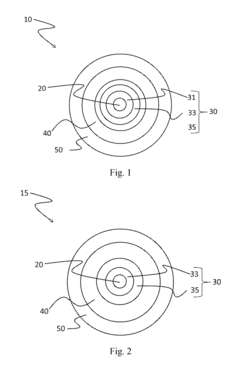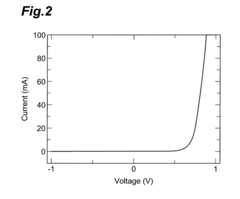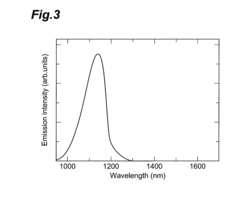How silicon photonics powers innovative broadcast technology.
JUL 17, 20259 MIN READ
Generate Your Research Report Instantly with AI Agent
Patsnap Eureka helps you evaluate technical feasibility & market potential.
Silicon Photonics Evolution
Silicon photonics has undergone a remarkable evolution since its inception in the late 1980s, transforming from a niche research field to a key enabler of innovative broadcast technology. The journey began with the pioneering work of researchers who envisioned integrating optical components with silicon-based electronics, leveraging the well-established semiconductor manufacturing infrastructure.
In the early stages, the focus was primarily on developing basic building blocks such as waveguides, modulators, and detectors. These components formed the foundation for more complex photonic integrated circuits (PICs). The 1990s saw significant advancements in fabrication techniques, allowing for the creation of low-loss silicon waveguides and improved coupling efficiency between optical fibers and silicon chips.
The turn of the millennium marked a crucial turning point for silicon photonics. The increasing demand for high-speed data transmission in telecommunications and data centers drove substantial investments in research and development. This period witnessed the emergence of silicon-based modulators capable of operating at gigabit speeds, paving the way for practical applications in optical communications.
As the technology matured, the broadcast industry began to take notice of silicon photonics' potential. The ability to integrate multiple optical functions on a single chip offered unprecedented opportunities for miniaturization and cost reduction in broadcast equipment. This integration capability led to the development of compact, high-performance transmitters and receivers for video distribution networks.
The mid-2000s saw the introduction of silicon photonic devices in commercial products, primarily in the form of optical transceivers for data centers. This commercialization phase accelerated the technology's advancement, with improvements in manufacturing processes leading to higher yields and lower costs. Concurrently, researchers made significant strides in developing active components such as lasers and amplifiers integrated on silicon platforms.
In recent years, silicon photonics has played an increasingly crucial role in broadcast technology innovation. The technology's ability to handle high-bandwidth signals with low latency has made it ideal for next-generation broadcast standards like 4K and 8K video transmission. Silicon photonic devices have enabled the development of compact, energy-efficient studio-to-transmitter links and contribution links for live event broadcasting.
The ongoing evolution of silicon photonics continues to push the boundaries of broadcast technology. Current research focuses on enhancing the integration density of photonic circuits, improving the performance of active components, and exploring novel applications such as on-chip optical processing for real-time video encoding and decoding. These advancements promise to further revolutionize the broadcast industry, enabling more efficient, flexible, and high-quality content delivery systems.
In the early stages, the focus was primarily on developing basic building blocks such as waveguides, modulators, and detectors. These components formed the foundation for more complex photonic integrated circuits (PICs). The 1990s saw significant advancements in fabrication techniques, allowing for the creation of low-loss silicon waveguides and improved coupling efficiency between optical fibers and silicon chips.
The turn of the millennium marked a crucial turning point for silicon photonics. The increasing demand for high-speed data transmission in telecommunications and data centers drove substantial investments in research and development. This period witnessed the emergence of silicon-based modulators capable of operating at gigabit speeds, paving the way for practical applications in optical communications.
As the technology matured, the broadcast industry began to take notice of silicon photonics' potential. The ability to integrate multiple optical functions on a single chip offered unprecedented opportunities for miniaturization and cost reduction in broadcast equipment. This integration capability led to the development of compact, high-performance transmitters and receivers for video distribution networks.
The mid-2000s saw the introduction of silicon photonic devices in commercial products, primarily in the form of optical transceivers for data centers. This commercialization phase accelerated the technology's advancement, with improvements in manufacturing processes leading to higher yields and lower costs. Concurrently, researchers made significant strides in developing active components such as lasers and amplifiers integrated on silicon platforms.
In recent years, silicon photonics has played an increasingly crucial role in broadcast technology innovation. The technology's ability to handle high-bandwidth signals with low latency has made it ideal for next-generation broadcast standards like 4K and 8K video transmission. Silicon photonic devices have enabled the development of compact, energy-efficient studio-to-transmitter links and contribution links for live event broadcasting.
The ongoing evolution of silicon photonics continues to push the boundaries of broadcast technology. Current research focuses on enhancing the integration density of photonic circuits, improving the performance of active components, and exploring novel applications such as on-chip optical processing for real-time video encoding and decoding. These advancements promise to further revolutionize the broadcast industry, enabling more efficient, flexible, and high-quality content delivery systems.
Broadcast Market Trends
The broadcast market is undergoing significant transformations driven by technological advancements and changing consumer preferences. Traditional broadcasting models are being challenged by the rise of digital platforms and streaming services, leading to a shift in content consumption patterns. Viewers now demand high-quality, on-demand content accessible across multiple devices, forcing broadcasters to adapt their strategies and infrastructure.
The global broadcast equipment market is experiencing steady growth, with projections indicating continued expansion in the coming years. This growth is fueled by the increasing adoption of high-definition (HD) and ultra-high-definition (UHD) content, as well as the transition to IP-based broadcasting systems. The market is also seeing a surge in demand for cloud-based solutions and software-defined networking, enabling more flexible and scalable broadcast operations.
Live sports and events remain a key driver of the broadcast industry, with major sporting events attracting massive viewership and advertising revenue. However, broadcasters face challenges in delivering high-quality live content to an increasingly fragmented audience across various platforms and devices. This has led to investments in advanced technologies such as 5G, artificial intelligence, and augmented reality to enhance the viewing experience and create new revenue streams.
The broadcast industry is also witnessing a convergence with the telecommunications sector, as telecom operators expand their services to include content delivery. This trend is driving investments in infrastructure upgrades and creating new opportunities for partnerships between broadcasters and telecom companies.
In emerging markets, there is a growing demand for localized content and improved broadcast infrastructure. This presents opportunities for equipment manufacturers and technology providers to expand their presence in these regions. Additionally, the rollout of digital terrestrial television (DTT) in many countries is creating demand for new broadcast equipment and services.
The COVID-19 pandemic has accelerated certain trends in the broadcast market, particularly the shift towards remote production and cloud-based workflows. Broadcasters are increasingly adopting virtualized solutions and IP-based technologies to enable more efficient and flexible operations, reducing reliance on traditional hardware-based systems.
As the broadcast industry continues to evolve, there is a growing focus on sustainability and energy efficiency. Broadcasters and equipment manufacturers are exploring ways to reduce power consumption and carbon footprint, aligning with global environmental initiatives and regulatory requirements.
The global broadcast equipment market is experiencing steady growth, with projections indicating continued expansion in the coming years. This growth is fueled by the increasing adoption of high-definition (HD) and ultra-high-definition (UHD) content, as well as the transition to IP-based broadcasting systems. The market is also seeing a surge in demand for cloud-based solutions and software-defined networking, enabling more flexible and scalable broadcast operations.
Live sports and events remain a key driver of the broadcast industry, with major sporting events attracting massive viewership and advertising revenue. However, broadcasters face challenges in delivering high-quality live content to an increasingly fragmented audience across various platforms and devices. This has led to investments in advanced technologies such as 5G, artificial intelligence, and augmented reality to enhance the viewing experience and create new revenue streams.
The broadcast industry is also witnessing a convergence with the telecommunications sector, as telecom operators expand their services to include content delivery. This trend is driving investments in infrastructure upgrades and creating new opportunities for partnerships between broadcasters and telecom companies.
In emerging markets, there is a growing demand for localized content and improved broadcast infrastructure. This presents opportunities for equipment manufacturers and technology providers to expand their presence in these regions. Additionally, the rollout of digital terrestrial television (DTT) in many countries is creating demand for new broadcast equipment and services.
The COVID-19 pandemic has accelerated certain trends in the broadcast market, particularly the shift towards remote production and cloud-based workflows. Broadcasters are increasingly adopting virtualized solutions and IP-based technologies to enable more efficient and flexible operations, reducing reliance on traditional hardware-based systems.
As the broadcast industry continues to evolve, there is a growing focus on sustainability and energy efficiency. Broadcasters and equipment manufacturers are exploring ways to reduce power consumption and carbon footprint, aligning with global environmental initiatives and regulatory requirements.
Technical Challenges
Silicon photonics in broadcast technology faces several significant technical challenges that need to be addressed for widespread adoption and optimal performance. One of the primary hurdles is the integration of photonic components with existing electronic systems. While silicon photonics offers high-speed data transmission, seamlessly interfacing these optical components with traditional electronic circuits remains complex, often requiring sophisticated packaging and interconnect solutions.
Another critical challenge lies in the thermal management of silicon photonic devices. As these components operate at high speeds and densities, they generate substantial heat, which can affect their performance and reliability. Developing effective cooling mechanisms and thermally stable designs is crucial for maintaining consistent operation in broadcast environments.
The manufacturing process for silicon photonic devices also presents challenges. Achieving high yield and uniformity in large-scale production of integrated photonic circuits is difficult due to the precise fabrication requirements and sensitivity to manufacturing variations. This impacts both the cost and reliability of silicon photonic solutions for broadcast applications.
Signal integrity and noise reduction pose additional technical hurdles. In broadcast scenarios, maintaining high signal quality over long distances and through complex network topologies is essential. Silicon photonic systems must overcome issues such as signal degradation, crosstalk between channels, and minimizing noise introduction in high-speed data transmission.
Power consumption is another area of concern. While silicon photonics offers potential energy savings compared to traditional electronic systems, further optimization is needed to make these solutions more energy-efficient, especially for large-scale broadcast infrastructure.
The development of robust and cost-effective testing and quality control methods for silicon photonic components and systems is also challenging. Ensuring the reliability and performance of these devices in real-world broadcast environments requires sophisticated testing protocols and equipment.
Lastly, the industry faces challenges in standardization and interoperability. As silicon photonics technology evolves, establishing common standards and ensuring compatibility between different manufacturers' components and systems is crucial for widespread adoption in the broadcast sector.
Addressing these technical challenges requires ongoing research and development efforts, collaboration between industry players, and innovative engineering solutions. Overcoming these hurdles will be key to fully realizing the potential of silicon photonics in revolutionizing broadcast technology.
Another critical challenge lies in the thermal management of silicon photonic devices. As these components operate at high speeds and densities, they generate substantial heat, which can affect their performance and reliability. Developing effective cooling mechanisms and thermally stable designs is crucial for maintaining consistent operation in broadcast environments.
The manufacturing process for silicon photonic devices also presents challenges. Achieving high yield and uniformity in large-scale production of integrated photonic circuits is difficult due to the precise fabrication requirements and sensitivity to manufacturing variations. This impacts both the cost and reliability of silicon photonic solutions for broadcast applications.
Signal integrity and noise reduction pose additional technical hurdles. In broadcast scenarios, maintaining high signal quality over long distances and through complex network topologies is essential. Silicon photonic systems must overcome issues such as signal degradation, crosstalk between channels, and minimizing noise introduction in high-speed data transmission.
Power consumption is another area of concern. While silicon photonics offers potential energy savings compared to traditional electronic systems, further optimization is needed to make these solutions more energy-efficient, especially for large-scale broadcast infrastructure.
The development of robust and cost-effective testing and quality control methods for silicon photonic components and systems is also challenging. Ensuring the reliability and performance of these devices in real-world broadcast environments requires sophisticated testing protocols and equipment.
Lastly, the industry faces challenges in standardization and interoperability. As silicon photonics technology evolves, establishing common standards and ensuring compatibility between different manufacturers' components and systems is crucial for widespread adoption in the broadcast sector.
Addressing these technical challenges requires ongoing research and development efforts, collaboration between industry players, and innovative engineering solutions. Overcoming these hurdles will be key to fully realizing the potential of silicon photonics in revolutionizing broadcast technology.
Current Solutions
01 Integrated photonic devices
Silicon photonics technology enables the integration of various optical components on a single chip. This includes waveguides, modulators, detectors, and other photonic elements, allowing for compact and efficient optical systems. The integration of these components facilitates high-speed data transmission and processing in optical communication networks and computing applications.- Integrated photonic devices and circuits: Silicon photonics technology enables the integration of optical components and electronic circuits on a single chip. This integration allows for the development of compact, high-performance photonic devices that can be used in various applications such as optical communications, sensing, and computing.
- Optical modulators and switches: Silicon photonics facilitates the creation of efficient optical modulators and switches. These components are crucial for manipulating light signals in photonic circuits, enabling high-speed data transmission and processing in optical communication systems.
- Photonic interconnects: Silicon photonics technology is used to develop photonic interconnects, which use light to transmit data between chips or within a chip. These interconnects offer higher bandwidth, lower power consumption, and reduced latency compared to traditional electrical interconnects, making them ideal for high-performance computing and data centers.
- Integration with CMOS technology: Silicon photonics can be integrated with existing CMOS (Complementary Metal-Oxide-Semiconductor) technology, allowing for the seamless combination of photonic and electronic components on a single chip. This integration enables the development of advanced optoelectronic devices and systems that leverage the strengths of both technologies.
- Photonic sensors and detectors: Silicon photonics technology enables the development of highly sensitive photonic sensors and detectors. These devices can be used in various applications, including environmental monitoring, biomedical sensing, and spectroscopy, offering improved performance and miniaturization compared to traditional sensing technologies.
02 Optical interconnects and data transmission
Silicon photonics is utilized in developing high-speed optical interconnects for data centers and telecommunications networks. These interconnects use light for data transmission, offering higher bandwidth and lower power consumption compared to traditional electronic interconnects. The technology enables efficient data transfer between chips, boards, and systems, addressing the growing demand for faster and more energy-efficient communication infrastructure.Expand Specific Solutions03 Photonic integrated circuits (PICs)
Silicon photonics allows for the creation of complex photonic integrated circuits that combine multiple optical functions on a single chip. These PICs can include lasers, modulators, multiplexers, and detectors, enabling advanced functionalities such as wavelength division multiplexing and optical signal processing. The integration of these components on silicon substrates offers cost-effective and scalable solutions for various applications in telecommunications and sensing.Expand Specific Solutions04 Silicon-based optical sensors and detectors
Silicon photonics technology is applied in developing highly sensitive optical sensors and detectors. These devices leverage the properties of silicon to detect and measure light across various wavelengths. Applications include environmental monitoring, biomedical sensing, and industrial process control. The integration of these sensors with other photonic components on a single chip enables compact and efficient sensing systems.Expand Specific Solutions05 Quantum photonics and silicon-based quantum devices
Silicon photonics is being explored for quantum computing and quantum communication applications. Researchers are developing silicon-based quantum photonic devices that can generate, manipulate, and detect single photons. These devices have potential applications in quantum key distribution, quantum sensing, and the development of scalable quantum computing architectures. The use of silicon as a platform for quantum photonics leverages existing semiconductor manufacturing processes.Expand Specific Solutions
Key Industry Players
The silicon photonics market for innovative broadcast technology is in a growth phase, with increasing adoption across the industry. The market size is expanding rapidly, driven by demand for high-speed data transmission and energy-efficient solutions. Technologically, silicon photonics is maturing, with key players like Taiwan Semiconductor Manufacturing Co., Huawei Technologies, and Micron Technology making significant advancements. Universities such as MIT and Zhejiang University are contributing to research and development. Companies like Lumentum Operations and Corning are pushing the boundaries of optical components and materials. The competitive landscape is diverse, with established semiconductor firms, telecom giants, and specialized photonics companies vying for market share in this promising field.
Hamamatsu Photonics KK
Technical Solution: Hamamatsu Photonics has developed silicon photonics-based solutions for broadcast technology, focusing on high-speed photodetectors and optical modulators. Their silicon avalanche photodiodes (Si APDs) offer high sensitivity and low noise for optical signal detection in broadcast systems[5]. Hamamatsu has also implemented silicon-based Mach-Zehnder modulators for high-speed optical signal generation. The company's silicon photonics technology enables the integration of multiple optical functions on a single chip, reducing the size and power consumption of broadcast equipment. Hamamatsu's solutions support wavelengths commonly used in optical communication systems, making them suitable for various broadcast applications, including studio-to-transmitter links and remote production setups[6].
Strengths: High-performance photodetectors, compact integrated solutions, and compatibility with existing optical communication standards. Weaknesses: Limited vertical integration compared to some competitors, potentially requiring additional components from other suppliers.
Lumentum Operations LLC
Technical Solution: Lumentum has developed advanced silicon photonics solutions for broadcast technology, leveraging their expertise in optical communications. Their integrated photonic circuits combine lasers, modulators, and detectors on a single chip, enabling high-speed data transmission for broadcast applications. Lumentum's silicon photonics technology supports wavelength division multiplexing (WDM) systems, allowing multiple channels of data to be transmitted simultaneously over a single fiber[1]. This approach significantly increases bandwidth capacity for broadcast networks. Additionally, Lumentum has implemented coherent optical solutions in their silicon photonics platform, enabling long-distance transmission of high-quality video and audio signals with minimal signal degradation[2].
Strengths: High integration density, increased bandwidth capacity, and long-distance transmission capabilities. Weaknesses: Potential thermal management challenges in high-power applications and relatively high initial implementation costs.
Core Innovations
Optical fiber for silicon photonics
PatentInactiveUS20160313502A1
Innovation
- The development of an optical fiber with a specific refractive index profile, including a core region, depressed index cladding region, and outer cladding region, optimized for high coupling efficiency and low bending losses, featuring a mode field diameter of at least 10.0 microns, a cable cutoff wavelength of 1260 nm, and bending losses of less than 0.45 dB/turn at 1310 nm.
Silicon light-emitting element
PatentInactiveUS20110220956A1
Innovation
- A silicon light-emitting element with a specific structure including a silicon substrate, an insulating film, and a silicon layer with controlled carrier concentrations and film thicknesses, where the insulating film is 0.3 nm to 5 nm thick, allowing efficient light emission with a wavelength easily transmitted through silicon waveguides.
Standardization Efforts
Standardization efforts in silicon photonics for broadcast technology have become increasingly crucial as the industry moves towards more advanced and integrated solutions. The IEEE has been at the forefront of these efforts, establishing working groups dedicated to developing standards for silicon photonic devices and systems. These standards aim to ensure interoperability, reliability, and performance consistency across different manufacturers and applications.
One of the key areas of focus has been the standardization of optical interfaces and interconnects. The IEEE P802.3bs task force has been working on defining standards for 400 Gigabit Ethernet using silicon photonics, which has significant implications for broadcast technology. This standard addresses the need for higher bandwidth and lower latency in data transmission, essential for next-generation broadcasting systems.
Another important aspect of standardization is the development of common testing and characterization methods for silicon photonic components. The IEC Technical Committee 86 has been actively involved in creating standards for fiber optic systems and active devices, including those based on silicon photonics. These standards help ensure that components from different suppliers can be reliably integrated into broadcast systems.
The Optical Internetworking Forum (OIF) has also played a crucial role in standardizing silicon photonic interfaces for coherent optical transmission systems. Their work on Implementation Agreements (IAs) for integrated coherent receivers and transmitters has been instrumental in advancing the adoption of silicon photonics in high-speed optical networks, which are essential for modern broadcast infrastructure.
Efforts are also underway to standardize the design and manufacturing processes for silicon photonic devices. The American National Standards Institute (ANSI) and the Photonics Systems Manufacturing Consortium (PSMC) have been collaborating to develop standards for photonic integrated circuit (PIC) design and fabrication. These standards aim to streamline the production of silicon photonic components, potentially reducing costs and accelerating innovation in broadcast technology.
As silicon photonics continues to evolve, standardization efforts are expanding to cover emerging areas such as quantum photonics and neuromorphic computing. These cutting-edge technologies have the potential to revolutionize broadcast systems, and early standardization efforts are crucial for ensuring their smooth integration into existing infrastructure.
One of the key areas of focus has been the standardization of optical interfaces and interconnects. The IEEE P802.3bs task force has been working on defining standards for 400 Gigabit Ethernet using silicon photonics, which has significant implications for broadcast technology. This standard addresses the need for higher bandwidth and lower latency in data transmission, essential for next-generation broadcasting systems.
Another important aspect of standardization is the development of common testing and characterization methods for silicon photonic components. The IEC Technical Committee 86 has been actively involved in creating standards for fiber optic systems and active devices, including those based on silicon photonics. These standards help ensure that components from different suppliers can be reliably integrated into broadcast systems.
The Optical Internetworking Forum (OIF) has also played a crucial role in standardizing silicon photonic interfaces for coherent optical transmission systems. Their work on Implementation Agreements (IAs) for integrated coherent receivers and transmitters has been instrumental in advancing the adoption of silicon photonics in high-speed optical networks, which are essential for modern broadcast infrastructure.
Efforts are also underway to standardize the design and manufacturing processes for silicon photonic devices. The American National Standards Institute (ANSI) and the Photonics Systems Manufacturing Consortium (PSMC) have been collaborating to develop standards for photonic integrated circuit (PIC) design and fabrication. These standards aim to streamline the production of silicon photonic components, potentially reducing costs and accelerating innovation in broadcast technology.
As silicon photonics continues to evolve, standardization efforts are expanding to cover emerging areas such as quantum photonics and neuromorphic computing. These cutting-edge technologies have the potential to revolutionize broadcast systems, and early standardization efforts are crucial for ensuring their smooth integration into existing infrastructure.
Environmental Impact
Silicon photonics technology in innovative broadcast systems offers significant environmental benefits compared to traditional broadcasting methods. The integration of silicon photonics in broadcast equipment leads to reduced energy consumption and improved efficiency. This is primarily due to the ability of silicon photonics to transmit data using light, which requires less power than conventional electronic systems.
The miniaturization of components enabled by silicon photonics results in smaller, more compact broadcast equipment. This reduction in size translates to less material usage during manufacturing, contributing to resource conservation. Additionally, the smaller form factor of silicon photonic devices means less space is required for installation and operation, potentially reducing the overall environmental footprint of broadcast facilities.
Silicon photonics-based broadcast systems also demonstrate enhanced thermal management properties. The reduced heat generation in these systems leads to lower cooling requirements, further decreasing energy consumption and associated carbon emissions. This improved thermal efficiency not only benefits the environment but also extends the lifespan of broadcast equipment, reducing electronic waste.
The technology's ability to transmit data over longer distances with minimal signal degradation can potentially reduce the need for signal amplification and repeater stations in broadcast networks. This streamlined infrastructure results in fewer physical installations across landscapes, minimizing habitat disruption and preserving natural environments.
Furthermore, the high-bandwidth capabilities of silicon photonics enable more efficient use of the electromagnetic spectrum. This efficiency allows for the transmission of more data with less spectrum allocation, potentially reducing the overall radio frequency emissions associated with broadcasting activities.
As silicon photonics technology continues to advance, it is expected to play a crucial role in developing more sustainable broadcast solutions. Future iterations may incorporate recycled or biodegradable materials in their production, further reducing the environmental impact. The technology's potential for integration with renewable energy sources, such as solar-powered transmitters, presents additional opportunities for creating eco-friendly broadcast infrastructure.
In conclusion, the adoption of silicon photonics in broadcast technology represents a significant step towards more environmentally responsible broadcasting practices. By reducing energy consumption, minimizing material usage, and enabling more efficient data transmission, silicon photonics contributes to the overall sustainability of the broadcast industry while meeting the growing demands for high-quality content delivery.
The miniaturization of components enabled by silicon photonics results in smaller, more compact broadcast equipment. This reduction in size translates to less material usage during manufacturing, contributing to resource conservation. Additionally, the smaller form factor of silicon photonic devices means less space is required for installation and operation, potentially reducing the overall environmental footprint of broadcast facilities.
Silicon photonics-based broadcast systems also demonstrate enhanced thermal management properties. The reduced heat generation in these systems leads to lower cooling requirements, further decreasing energy consumption and associated carbon emissions. This improved thermal efficiency not only benefits the environment but also extends the lifespan of broadcast equipment, reducing electronic waste.
The technology's ability to transmit data over longer distances with minimal signal degradation can potentially reduce the need for signal amplification and repeater stations in broadcast networks. This streamlined infrastructure results in fewer physical installations across landscapes, minimizing habitat disruption and preserving natural environments.
Furthermore, the high-bandwidth capabilities of silicon photonics enable more efficient use of the electromagnetic spectrum. This efficiency allows for the transmission of more data with less spectrum allocation, potentially reducing the overall radio frequency emissions associated with broadcasting activities.
As silicon photonics technology continues to advance, it is expected to play a crucial role in developing more sustainable broadcast solutions. Future iterations may incorporate recycled or biodegradable materials in their production, further reducing the environmental impact. The technology's potential for integration with renewable energy sources, such as solar-powered transmitters, presents additional opportunities for creating eco-friendly broadcast infrastructure.
In conclusion, the adoption of silicon photonics in broadcast technology represents a significant step towards more environmentally responsible broadcasting practices. By reducing energy consumption, minimizing material usage, and enabling more efficient data transmission, silicon photonics contributes to the overall sustainability of the broadcast industry while meeting the growing demands for high-quality content delivery.
Unlock deeper insights with Patsnap Eureka Quick Research — get a full tech report to explore trends and direct your research. Try now!
Generate Your Research Report Instantly with AI Agent
Supercharge your innovation with Patsnap Eureka AI Agent Platform!







